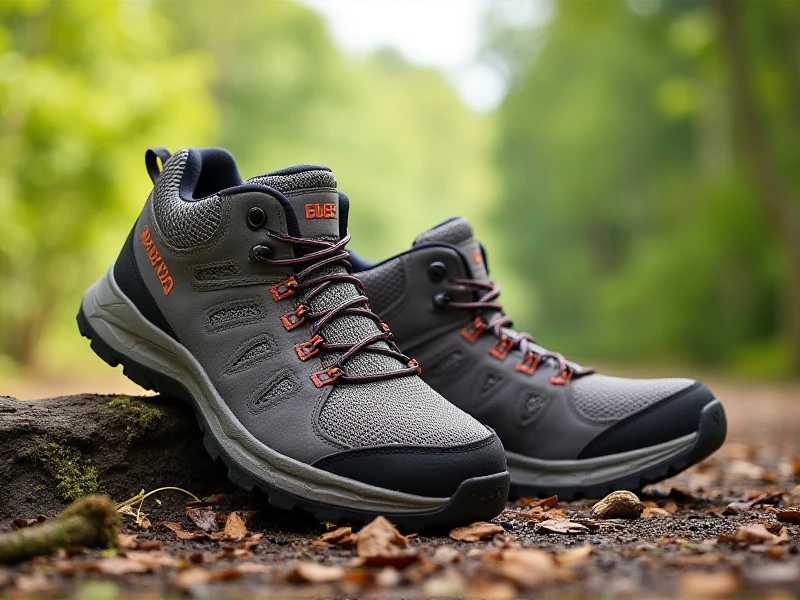Durable Traction & Comfort: The Ultimate Guide to Men's Outdoor Shoes
2025-06-01

Finding the perfect pair of men's outdoor shoes is more than just a purchase; it's outfitting your feet for adventure, ensuring safety, and unlocking greater enjoyment on every trail, path, or mountain stream. Whether you're tackling steep mountain hikes, navigating muddy woodland paths, or simply exploring nature trails on the weekend, choosing the right footwear makes all the difference. Let's break down what defines excellent men's outdoor shoes and how to find your ideal match.
Beyond the Pavement: Why Dedicated Outdoor Shoes Matter
Using regular sneakers or casual shoes for genuine outdoor pursuits quickly leads to discomfort and even injury. Men's outdoor shoes are engineered specifically to address the demands of nature:
1. Superior Traction: Aggressive, multi-directional lugs grip loose dirt, mud, wet rocks, and slippery roots far better than standard designs. A quality outsole compound maintains flexibility in the cold and grip when wet.
2. Enhanced Protection: Reinforced toe caps (rubber or thermoplastic) shield against stubs. Durable uppers resist tears from branches or rocks. Gaiter attachments prevent debris entry. Higher collars, especially on boots, offer ankle support and protection.
3. Weather Defense: Many styles feature waterproof membranes like Gore-Tex or proprietary equivalents, keeping feet dry in rain, snow, and shallow streams. Breathable mesh versions prioritize ventilation for warm adventures. Water-shedding treatments on non-membrane shoes are common.
4. Support & Stability: Midsoles provide targeted cushioning for impact absorption on descents, while chassis systems or stiff plates embedded within add torsional stability on uneven ground, reducing fatigue and preventing ankle rolls.
5. Durability: Tough ripstop nylon, synthetic leathers, and reinforced construction withstand abrasion, moisture, and extended use far better than standard shoes.
Navigating Your Terrain: Choosing the Right Type of Men's Outdoor Shoe
Matching your activity to the footwear is crucial:
Hiking Boots: The go-to for demanding backpacking, rugged trails, and heavy loads. Providing maximum ankle support, stability, and protection. High-cut boots excel in rocky, uneven terrain. Mid-cut styles blend support with flexibility.
Best for: Backpackers, technical terrain, cold/wet conditions, carrying significant weight.
Trail Running Shoes: Lightweight, agile, and highly flexible. Prioritize quick drainage, breathability, and ground feel for moving fast over varied terrain. Excellent traction, but less stability and protection than boots. Some offer light waterproofing.
Best for: Fast hiking, trail running, peak bagging, dry/moderate trails, hot weather.
Day Hikers: Sit between trail runners and full boots. Offer good support, protection, and traction for day trips but are often lighter and more flexible than heavy-duty boots. Available in both mid and low-cut options.
Best for: Weekend warriors on established trails, moderate day hikes, general outdoor exploration, most seasons.
Approach Shoes: Blend climbing shoe grip (sticky rubber edging zones) with hiking shoe support/structure. Designed for scrambling, climbing approaches, and technical trails. Often have reinforced toe areas for edging.
Best for: Scrambling, climbing approaches, steep talus fields, technical terrain requiring precise footwork.
Casual Outdoor Shoes: Cross-trainer inspired comfort meets outdoor elements. Features like water resistance, trail-inspired soles, and durable materials make them perfect for light walks, camping trips, or after-adventure comfort.
Best for: Everyday casual wear with an outdoor edge, light trails, running errands in variable weather.
Features That Make a Difference in Men's Outdoor Shoes
Beyond the shoe type, pay close attention to these key details:
Waterproof vs. Breathable: Highly waterproof models are vital for wet/cold climates or consistently wet trails. However, they can feel warmer. Breathable shoes (non-waterproof or hybrid membranes) keep feet cooler and dry sweat faster – ideal for hot weather or fast-paced activities where sweat build-up is a concern.
Outsole Compound & Lug Pattern: Softer rubber grips better on rock but wears faster. Firmer rubber excels on trails and lasts longer. Wide spacing (deep lugs) sheds mud effectively. Consider the specific terrain you frequent most.
Midsole Cushioning & Stack Height: Maximum cushion eats up impact on long hikes but can reduce stability on slick surfaces. Lower stack heights enhance ground feel and stability. Choose based on weight carried and personal comfort preference.
Fit & Construction: This is crucial. Always try shoes on in the afternoon when feet are slightly swollen. Wear the socks you intend to hike in. Leave a thumb's width of space beyond your longest toe. Ensure a snug heel counter (prevents slippage) and a secure midfoot hold. Boot construction (cemented vs. welted) impacts repairability and longevity.
Caring for Your Investment: Prolonging Shoe Life
Quality men's outdoor shoes are an investment. Care for them properly:
1. Clean: After muddy/wet outings, rinse off grime with water and a soft brush. Avoid machine washing unless specified by the manufacturer.
2. Dry: Never place wet shoes near direct heat (fire, radiator) – it damages glues and materials. Stuff with newspaper and air dry at room temperature. Remove insoles to dry separately.
3. Re-Treat: Regularly apply manufacturer-recommended waterproofing treatments (like Nikwax) to maintain water resistance on applicable models. Clean the shoe thoroughly first.
4. Protect: Use dedicated conditioners for leather boots to preserve suppleness and avoid cracking.
5. Rotate: If you hike frequently, rotating between two pairs allows each to fully dry and recover, prolonging the midsole's cushioning life.
Gearing Up for Adventure
Choosing the best men's outdoor shoes means aligning your specific needs – terrain, climate, activity level, and personal fit preference – with the right features. Invest the time in research and, most importantly, trying them on properly. Don't be afraid to ask knowledgeable staff in outdoor retailers questions. When your footwear is dialed in, every step feels more comfortable and confident, letting you focus entirely on the beauty and challenge of the outdoors. Explore boldly, knowing your foundation is secure.
Category: